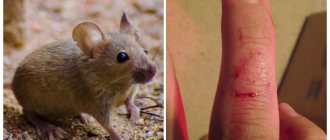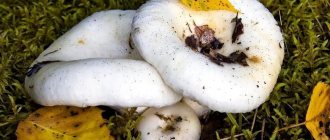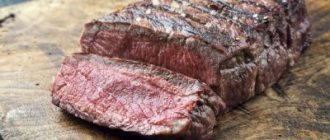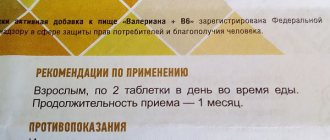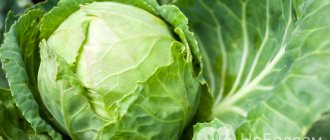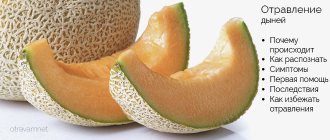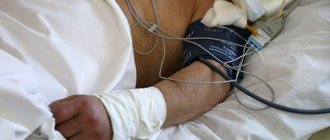Causes of poisoning
Poisoning can occur for several reasons. These include:
- Improper storage. As a rule, salad dressing is mayonnaise. This sauce cannot be stored in food for long. If the dish is on the table, then it retains its normal qualities for about three to four hours. This dish can last no more than a day in the refrigerator. Otherwise, harmful bacteria begin to appear and multiply in it, which have a negative effect on the body when they enter the intestines.
- Dirty dishes. Making a salad is a delicate act. All hygiene rules must be followed. Knives used for slicing raw meat must be thoroughly washed, and it is better to use separate equipment for salads. The fact is that bacteria remain on the equipment and then penetrate into the next dish.
- Marinades. Many salad recipes use pickled mushrooms or vegetables. You need to be sure that this type of preservation is prepared in compliance with all the rules. Often, with poor heat treatment, botulism bacteria can appear in such jars, which is quite dangerous for humans.
- Insects. On summer days, a variety of fresh salads are very popular. However, you should always remember not to leave the product uncovered. Indeed, at this time of year, various insects become very active and carry harmful microorganisms on themselves. It is enough for a fly to touch the salad with its paws or sit on it, and now the bacteria in this dish begin to actively multiply.
- Poor washing. Poorly washed fruits and vegetables can cause quite severe intoxication. And the appearance of worms in this case cannot be avoided.
These are the main reasons that can provoke.
Is it possible to get poisoned by sauerkraut?
Poisoning is possible when consuming sauerkraut that has not undergone additional heat treatment . Also, often the source of harmful bacteria is not the pickle itself, but the additives present in it and the products with which it was consumed.
Spoiled sauerkraut develops various harmful bacteria that can cause intoxication. The most dangerous pathogens are considered to be botulism, which develop not only in meat and fish, but also in any anaerobic environment.
Infection with botulism is possible if the pickles were in an airless environment. Such conditions are created in hermetically sealed jars and bags. The pathogen spores get into the snack itself along with particles of soil, from dirty hands or in the wrong proximity.
Note! In 2010, a case was recorded where a family of 5 people became ill with botulism after eating sauerkraut.
Botulism rarely develops in cabbage. Much more often, a spoiled product becomes a medium for the development of E. coli. It causes symptoms of intoxication, but is not considered fatal.
The greatest risk of infection is when buying cabbage at the market or in a store. Unscrupulous sellers often do not follow the cooking technology, trying to quickly sell an unfermented product.
Pickles that have expired are also being sold. To hide the signs of a spoiled product, the snack is washed, treated with vinegar and a weak chlorine solution. To mask the unpleasant color and smell, vegetables, berries, fruits, and sauces are added to sauerkraut.
It is safest to buy sauerkraut without additives, because in this form it is easier to check its suitability for consumption.
Lettuce poisoning: how to protect yourself
What needs to be done to prevent intoxication from occurring? There are a number of specific preventive measures that will help avoid such intoxication.
Prevention consists of:
- Properly stored. You should not prepare salads in large quantities; store them in the refrigerator for a long time. If a big celebration is planned, then it is better to season the dish with mayonnaise before serving. Those salads that require preparation with mayonnaise right away are best served first.
- Wash vegetables and fruits thoroughly before cutting them into a dish.
- It is good to wash equipment that is used simultaneously for cutting salads and other products, such as meat.
- If sediment appears in a jar of marinades, then you should not use such products. They can cause botulism,
- You should avoid buying ready-made salads at the grocery store, because it is unknown how long they actually last.
By following these simple rules, you can avoid intoxication and negative consequences.
Expired shelf life
This is another dairy product that can be consumed after the expiration date. An open jar of yogurt will spoil faster than a closed one, so in an airtight container it can last 1-2 weeks after the date recommended on the package.
Pay attention to the smell and presence of mold in the yogurt, and if everything is fine, it is safe to eat.
Chips may also become stale after the expiration date, but they may be quite safe to eat.
Since this product is subject to intensive processing, it can be stored for quite a long time. If the package was opened, the chips will be fine for several more weeks, and if closed, then for several months.
Have you ever noticed a white coating on a chocolate bar? This is not mold, but what is called "chocolate bloom", and is associated with fat or sugar content, but is safe to consume.
If you store chocolate in a cool place below 20 degrees Celsius, it will outlive its expiration date.
Many seasonings have a long shelf life due to their high sugar and salt content. Here's how long these seasonings last after opening:
Ketchup can be stored for about a month in the kitchen cupboard and 6-8 months in the refrigerator.
Mayonnaise 2 months in the refrigerator
Jams and confitures for about 1 year in the refrigerator
Mustard – 6-8 months in the refrigerator
Salad dressing - 3 months in the refrigerator
Most eggs stay fresh for about a month after the expiration date if stored in the refrigerator.
If you're not sure, there's an easy way to check if your eggs are spoiled.
Place them in a glass of water: if the egg sinks to the bottom, it is suitable for consumption, but if it floats, it should be thrown away.
Treatment and symptoms of lettuce poisoning
Poisoning refers to food intoxication. Therefore, the symptoms will be similar to those that occur with poisoning of any other food product.
Note:
- rumbling in the stomach about half an hour after eating a low-quality dish,
- pain in the stomach and intestines,
- nausea, vomiting,
- diarrhea,
- occasional increase in temperature,
- weakness, apathy,
- increased sweating,
- decrease in pressure.
These are the most basic and first signs that indicate the presence of intoxication. If they are detected, the poisoned person must be given the necessary assistance.
You should:
- Do not stop vomiting, because in this way the body tries to get rid of the substance that brings discomfort.
- If there is no gag reflex, you need to provoke it yourself. Moreover, at the same time. To do this, you can use a large amount of boiled water. You need to give it to the victim to drink, and then press your finger on the root of the tongue to trigger a gag reflex.
- You can give a person a laxative to drink to also quickly remove the toxin from the body.
- Treatment of lettuce poisoning is carried out using drugs such as,
- Both adults and children should be given a warm drink with the addition (diluted according to instructions). The fact is that vomiting and diarrhea can lead to dehydration. As a result, the water-salt balance will be disrupted. in this case, is exactly the remedy that will help restore it.
- You should definitely call a doctor to make sure there is no bacterial growth. If necessary, the specialist will send the person to a medical facility and prescribe tests and treatment.
Treatment of severe poisoning is carried out only in a hospital. After all, the cause of poisoning can be not only a spoiled product, but also botulism or salmonellosis bacteria. And they pose quite a serious danger to humans.
What is eggplant?
Of course, to the question of what an eggplant is, any person who has visited grocery stores or markets at least once will answer – a vegetable. However, from a botanical point of view, this is not at all true.
Botany classifies dark blue or purple foods as berries; only cooks and laymen classify them as vegetables. But the practical use of the products, as well as their appearance, processing methods are such that in everyday life, scientists involved in botanical research call them vegetables.
Dishes made from this product are present in almost all cuisines of the world, and they themselves, accordingly, have been grown everywhere since ancient times. Moreover, in many languages, eggplants have their own names. For example, the French call them "aubergine", the Portuguese - "bringella", and the Italians - "melanzana".
The Middle East region is considered to be the birthplace of vegetables. However, the wild crop is found not only there, but also in India and Asia. The color of the products is not only dark blue or deep purple. The color of the skin can be white, grayish-green, lilac and even yellow.
It is quite curious that in the history of European cooking, eggplant is associated not only with gourmet or simple dishes, but also with poisons. The specific taste of these products is an excellent masker for many poisons, such as arsenic. Dishes with them, containing garlic, which enhances taste, often caused the death of noble people, especially in Florence.
This is probably due to the fact that in haute Italian cuisine, starting around the 18th century, they began to avoid combining eggplants with garlic, using onions and tomatoes instead.
Poisoning of noble persons with dishes made from this vegetable occurred not only in Italy. This to some extent became the reason that many people began to consider the product poisonous.
Lettuce poisoning: prevention
Preventive measures that will help prevent poisoning are quite simple.
Measures:
- you should pay more attention to this dish, observe the storage temperature,
- use only clean vegetables and fruits,
- check expiration dates of ingredients,
- prepare salads, maintaining cleanliness,
- do not buy ready-made dishes in the culinary department.
Of course, no one is calling for giving up this food forever. Compliance with the minimum rules will help avoid poisoning. If this does happen, then you should not panic, but provide the person with the necessary help.
However, you should always remember that you should not refuse to visit doctors. After all, even the most harmless poisoning can cause a very serious illness, which will then be much more difficult to get rid of.
Medicines
| Name | Description | Contraindications | Cost, rub |
| Smecta | Is a sorbent. Helps with poisoning and diarrhea. Available in powder form for preparing a suspension. | The drug should not be taken for the genesis or symptomatic treatment of heartburn. | From 153 |
| Regidron | Helps restore water-salt metabolism. | Not recommended for people with impaired renal function. | From 397 |
| No-shpa | Eliminates any pain. | The drug is prohibited for people with liver failure. | From 58 |
| Mezim Forte | Helps restore disturbances in intestinal microflora. | The drug is prohibited for acute pancreatitis. | From 81 |
| Motilium | It is an antiemetic drug. | Not recommended for people with the development of prolactinoma. | From 605 |
| Loperamide | It is an antidiarrheal drug. Used for meat poisoning. | Not recommended for people with individual lactose intolerance. | From 12 |
| Phthalazole | It is used for poisoning and the development of dysentery. | Not recommended for people with individual intolerance to phthalylsulfathiazole. | From 50 |
Video: salad with salmonella
As a rule, the culprits of food poisoning are microbes: E. coli, staphylococci, botulism bacilli, salmonella.
In a warm room
, at temperatures from 15 C to 37 C, they quickly multiply in fish and meat products, cheese curds, cakes, cottage cheese, vinaigrette, salad, vegetable cutlets, pies with fish or meat. In minced meat, when stored warm for 24 hours, the number of microbes increases hundreds of times. In a cellar or refrigerator, these products are stored at a temperature that does not rise above +6 C for a certain time.
For example
:
– fish and meat unbreaded semi-finished products in pieces (steak, entrecote, fillet) – 36 hours
- minced meat, not seasoned - 3 hours
– fish and meat jelly, fish meat and jellied dishes – 12 hours
- meat in small pieces (stew, goulash), fish and meat cutlets -12 hours
– breaded semi-finished products, – 24 hours
– fish (hot smoked) – 72 hours
– liver pate – 24 hours
- boiled sausages, small sausages and frankfurters - 48 hours
- blood brawn, liver sausage - 12 hours
– cake with butter cream – 36 hours
— fried and baked pies with liver, meat, fish, – 24 hours
– quiche – 6 hours
- curd mass, curd cheeses, cottage cheese - 24 hours
– unpasteurized milk in bottles – 12 hours
— — 36 hours
Canned vegetables and meats can be stored in the cold.
Dishes that have been kept warm must be fried or boiled a second time before eating.
It is very important to strictly observe sanitary and hygienic rules for preparing and storing food. After all, food products can become contaminated when they are processed. It is necessary to properly cut carcasses - to protect the meat from any contact with the animal’s intestines, as there may be harmful microbes there.
After adding boiled meat to the jelly, it must be boiled again and then poured into dishes.
Boiled and raw meat should be cut on different boards, and after processing raw meat, the meat grinder and knives should be washed very thoroughly with warm water and detergent; Naturally, you need to wash your hands too.
Fry the filled pancakes thoroughly, and bake the liver and meat pates in the oven.
If a person is sick with pustular diseases of the hands or, then he must be protected from cooking, as there is a possibility of staphylococci getting into it, which can cause not only panaritium, sore throat, but also severe food poisoning.
It has been noticed that very often the carrier of microbes
flies
on the products . After all, the legs of these insects are covered with hairs and have sticky pads. Sewage and dirt containing various microorganisms easily stick to them. During the experiments, scientists discovered. that there are up to 7 million microbes on just one fly.
Therefore, it is necessary to pay due attention to the fight against flies! All products, especially butter, bread, sugar, must be kept in containers with very tight-fitting lids that are inaccessible to flies. Vegetables and fruits should be thoroughly washed with clean water before eating and then doused with boiling water.
When the body is poisoned by microbes
, the first signs are pain and heaviness in the abdomen, chills, weakness, and almost always vomiting and nausea. This symptomatology indicates poisoning of the body with poisons secreted by microbes. The mucous membranes of the intestines and stomach become inflamed, and as a result, the secretion of digestive juices is significantly reduced.
When the first signs of poisoning appear, you should consult a doctor as soon as possible. Remember that self-medication can lead to serious consequences. Remember that the disappearance of diarrhea, abdominal pain, and nausea does not yet indicate complete recovery. And, if you do not complete the full course of treatment under the supervision of a doctor, the disease can become chronic and will periodically worsen.
How to help a victim
in case of food poisoning before the doctor arrives? First of all, remove toxic products or microbes that caused the disease from the body as quickly as possible. The patient needs to do a warm cleansing enema, consisting of 3-5 glasses of decoction (3-5 teaspoons of chamomile, brewed in 3-5 glasses of boiling water, and then cooled to room temperature), or from a weak (pink) solution of potassium permanganate.
No need to suppress vomiting
but it should not be induced artificially, without a doctor’s recommendation. The thing is
that some serious diseases ( cerebrovascular accident
,
myocardial infarction) sometimes begin in the same way as food poisoning. Therefore, in some cases, artificially induced vomiting can dramatically worsen the condition of patients.
It is especially harmful to be treated at your own discretion with antibiotics. Indiscriminate use of these medications creates conditions for the formation of bacteria resistant to antibiotics and contributes to the disease becoming chronic.
First aid for food poisoning
In case of food poisoning, it is necessary to create maximum rest for the stomach and intestines. Therefore, on the first day, the patient is given only 5-8 glasses of strong, warm, sweet tea.
From the second day you can give:
Wheat bread crackers;
Weak meat and fish broths, seasoned with a slimy decoction of cereals, or egg flakes, or semolina, or meatballs;
Boiled or steamed cutlets from lean beef or chicken, turkey, rabbit, made without adding garlic or onions to the minced meat;
Low-fat boiled fish (pike perch, carp, mirror carp, pike, cod, herring, silver hake);
Puree porridges - rice, semolina, buckwheat, cooked in water or meat broth;
Diet eggs, but no more than two per day (recommended as a steam omelet or soft-boiled).
Useful
pureed freshly prepared jelly and jelly from a variety of sweet berries and fruits (blueberries, bird cherry, and pear are especially recommended, which contain
tannin
, which has an anti-inflammatory and disinfectant effect). For drinks, you can give tea, without milk, rosehip decoction.
Sugar and butter are limited to 40-50 grams per day for the patient. In larger quantities, these products cause fermentation in the intestines and lead to an exacerbation of the disease.
You need to eat 4-5 times a day at the same hours, in small portions, then the load on the intestines will be even, and the food will be better digested.
All dishes must be warm. Why? Cold food irritates the nerve endings of the gastric mucosa and reflexively increases intestinal movement; hot - irritates the esophagus and stomach.
Strict diet doctor
It is usually prescribed on the second day from the moment of illness, and the patient must follow it for 4-5 days.
As your health improves, your diet begins to include vermicelli, vegetable purees (potato, carrot, squash, pumpkin), baked pears, pureed compotes of sweet varieties of fruits and berries, porridge cooked in water with the addition of milk .
(water - two thirds, milk - one third). If the patient tolerates these dishes well, you can gradually include fried fish, meat, raw vegetables and fruits, cheese, and lean ham in the menu.
For 3-4 weeks from the moment of illness, you should avoid foods that linger in the stomach and intestines for a long time or that irritate the mucous membrane and increase juice secretion. There is no need to eat fatty fish and meats, pastry products, smoked foods, canned food, pickles, marinades, hot spices (pepper, mustard), some vegetables (radish, radish, garlic, onions), sour berries and fruits.
Often, patients, having suffered food poisoning, for a long time, contrary to the advice of the doctor, follow an overly strict diet, poor in protein products, consisting mainly of cereals, broths, jelly, and white bread. This, as a rule, reduces the body's resistance, leads to a more protracted course of the disease, worsens the general condition, and reduces performance.
However, the other extreme is no less harmful, when after the symptoms of the disease disappear, patients immediately begin to eat everything. This may cause the disease to return.
Only strict adherence to all the doctor’s prescriptions can help the patient cope with the disease.
Consumption of confectionery products often leads to poisoning. Not least among the most popular sources of intoxication are cakes.
They contain a lot of glucose and other sugars, which are an excellent breeding ground for bacteria and harmful microorganisms.
Thus, it can be argued that eating a low-quality or spoiled cake can lead to food poisoning, the symptoms of which every person should know.
Cakes are the most sought after culinary delicacy among food lovers.
They contain a high concentration of carbohydrates, proteins and other nutritional ingredients. But it is precisely the above substances that provide an excellent environment for the development of harmful bacteria and toxins, due to the consumption of which a person can suffer from food poisoning.
It is worth knowing that such situations are relevant even when purchasing a packaged product, the storage conditions of which have been properly observed, since bacteria enter the cake even at the stage of preparation or packaging.
An excellent medium for the proliferation of microorganisms is protein cream.
In the summer, they try to replace it with something alternative, less perishable. But you can also be poisoned by such a cake, since bacteria can also invade other components of the product.
Food intoxication from the cake occurs due to the presence of creams and jam in it.
Spoiled jam, for example, can lead to one of the most dangerous diseases - botulism, therefore, when purchasing your favorite confectionery product, you should monitor its production date, expiration date and buy from conscientious, high-quality confectioners.
General characteristics of condensed milk
After an illness, the patient must follow the rules so that complications do not arise. What to do after ice cream poisoning?
- monitor nutrition and adhere to a therapeutic diet;
- instead of the usual liquid, drink more alkaline water;
- adhere to bed rest.
Intoxication may cause anemia and weakened immune defenses. In such a situation, the patient experiences rapid body fatigue and can no longer cope with the usual amount of work.
In addition, you will have to remove a number of familiar dishes from your diet:
- fermented milk products (even low fat content);
- pickles, fried and spicy foods;
- semi-finished products, meat delicacies.
It is prohibited to overload the gastrointestinal tract during this period; foods that can irritate the intestinal walls are excluded.
Mushrooms or nuts are considered complex foods, so they should not be present in the diet.
Egg poisoning
Condensed milk is obtained by boiling sugar with milk. It has a white color, viscous mass, and a pleasant aroma of milk. It is important to know that it should not contain additional flavors: vanilla, baked milk. This may indicate the addition of flavorings or the product being stale.
Violation of technology during production is fraught with the risk of pathogenic microorganisms getting into the delicacy. These organisms live and reproduce for a long time, after which they enter the human body and cause food poisoning, which in some cases can be fatal.
If a person has eaten some expired condensed milk that has just passed its expiration date, then there may be no consequences. Unpleasant health consequences may occur if a lot of condensed milk that has expired has been consumed without prior heat treatment.
Condensed milk, what could be tastier than this delicacy, familiar to everyone since childhood. Adults and children love this milk; it is especially popular on long hikes and on picnics. To avoid health problems, you need to consume only fresh condensed milk of good quality.
Expired condensed milk cannot always be disposed of quickly. Expired milk can be used for confectionery purposes if you follow the rules below:
- The time of expired products does not exceed one month;
- Condensed milk is in a metal can;
- The product must be natural and not contain other additives;
- Before use, the expired product will be thermally treated;
- The product is canned and stored in a cold area.
Expired condensed milk is boiled in a jar for at least three hours over low heat with a normal amount of water. This condensed milk is used to make cakes or as an additive to dough.
Is it possible to eat expired condensed milk? If you have consumed a small amount of a product whose expiration date has recently passed, no problems with the gastrointestinal tract may arise. However, this does not mean that this condensed milk is completely safe. Especially when it comes to feeding children. After all, the walls of a child’s stomach are not able to filter toxic substances as effectively as those of adults.
Condensed milk is produced by boiling whole cow's milk or skim milk with sugar. The result is a thick, viscous mass of white or slightly cream color, with a characteristic taste and smell. Good condensed milk should taste sweet and leave an aftertaste of fresh cow's milk. There should be no foreign flavors - vanilla, baked milk, this may indicate that the product is unnatural.
Symptoms
The first signs of cake poisoning are often noticeable quickly in the fall - half an hour to an hour after eating an expired or spoiled product. At first, a person feels an unpleasant gurgling sound, then acute abdominal pain, ending with nausea and profuse vomiting.
Symptoms are often accompanied by diarrhea, which leads to intoxication and dehydration. Body temperature rarely rises, reaching a maximum of 38 C.
In the case of poisoning in children, the main threat is dehydration resulting from excessive vomiting and diarrhea.
This disease is accompanied by pale skin, loss of strength, increased heart rate and breathing. Acute poisoning if medical care is not provided in a timely manner can lead to loss of consciousness and convulsions.
Only a doctor can diagnose the cause of any food poisoning.
Nevertheless, the clinical picture of the symptoms of this intoxication is similar to all toxic infections. After the ambulance arrives or within the walls of a medical institution, complaints that arose from the patient after consuming the product he named, in this case, a confectionery product, are collected.
Fatal alcohol intoxication
Alcoholism is a chronic mental illness in which tolerance to alcohol increases, withdrawal syndrome and toxic damage to organs develop. The main danger of poisoning arises from the ethanol content in alcoholic beverages.
Ethyl alcohol affects nerve cells in the brain. After the oxidation of ethanol, another toxic substance is formed in the body - acetaldehyde, which destroys the walls of blood vessels, liver and brain tissue. A fatal outcome is possible when the blood alcohol concentration is above 3-5 ppm.
Is it possible to die from alcohol poisoning? Despite the fact that the liver does its best to neutralize ethanol and remove it from the body, a lethal single dose is approximately 300 ml of 96% ethanol.
Treatment
Every person must know the main symptoms of cake intoxication, since this disease is widespread. If the first signs of poisoning are detected, you should immediately.
To do this, the poisoned person drinks about 1.5-2 liters of water almost in one gulp, and then induces artificial vomiting by pressing his fingers on the root of the tongue. Washing is repeated until the vomit becomes completely transparent.
IMPORTANT!!! The first portion of rinsing water must be saved, as it will help to culture the vomit for bacteriological examination.
After washing, the patient takes adsorbent drugs: Polisob, Atoxil, which bind toxic substances in the intestines. This way you can recover faster from poisoning. In some cases, doctors prescribe antibiotics if intoxication has led to more severe consequences.
In case of severe dehydration, it is urgent to restore the water-salt balance of the body, so the patient is given salted water or a solution in small portions.
In case of poisoning, it is prohibited to use antiemetic and antidiarrheal drugs, since these mechanisms play an important role in the reaction to a pathogenic pathogen.
There is no need to fight these manifestations; it is enough to restore the amount of fluid in the body in a timely manner.
It is important to follow a strict diet after poisoning and during the recovery process. For the first 24 hours, you should completely avoid eating any food. After a day or two, food should be introduced gradually, in small portions, but be sure to exclude fatty, spicy, and smoked foods. It is allowed to eat oatmeal, rice, crackers and drink weak tea or a decoction of dried fruits.
If you experience the first signs of food intoxication after eating cake, you should seek medical help. An advanced stage of poisoning can lead to diseases such as acute appendicitis, pancreatitis, ulcers, and in the worst case, death.
IMPORTANT!!! Self-medication for any type of poisoning is prohibited. Due to the high risk of contracting botulism, doctors recommend not to hesitate to call an ambulance, and before consuming goodies, be sure to monitor their expiration date. During the hot season, it is better to avoid eating cakes altogether.
Food poisoning is a condition well known to every person, which is a “disorder” of the intestines. Food poisoning is caused by eating low-quality, poorly prepared, stale foods. The most common causes of poisoning are perishable foods - fermented milk, raw smoked and mayonnaise dishes. Fermented milk products such as yogurt, milk, cottage cheese, sour cream have a too short expiration date; consuming expired products can lead to food poisoning.
Also, mayonnaise salads, which are eaten the day after preparation, are likely to lead to food poisoning. The fact is that after the expiration date of the above products, a large number of harmful bacteria appear in the food, which lead to intoxication of the body.
Symptoms of food poisoning usually appear 2-3 hours after consuming a harmful product. Among them:
Vomiting and diarrhea. Depending on the degree of poisoning, diarrhea and vomiting can occur simultaneously or repeatedly. This condition indicates intoxication of the body, which in turn is trying to get rid of toxins by all means;
Body temperature rises;
Manifestation of general weakness and lethargy;
A few hours after poisoning, the patient may experience loss of consciousness, decreased blood pressure (see What to do with low blood pressure?), pale skin, cold extremities, and increased sweating. This occurs as a result of the fact that after bouts of vomiting and diarrhea, the body loses a large amount of fluid and strength.
When the first symptoms of poisoning appear, treatment must be started immediately. First of all you need to:
- avoid dehydration;
- call an ambulance;
- if necessary, hospitalize;
- know how to provide first aid yourself.
If necessary, the patient will be hospitalized in the infectious diseases department, where food poisoning will be treated. If the ambulance takes too long or there is no way to call a doctor, you need to know what to do in case of poisoning.
In what cases is medical assistance needed?
In some cases, independent treatment is impossible. A doctor is called if:
- a child, an elderly person, a woman during pregnancy, a person with chronic diseases of the liver, pancreas, and gastrointestinal tract were affected;
- first aid did not bring positive results or the condition worsened;
- traces of blood were found in vomit or feces;
- an increase in temperature is accompanied by convulsions;
- severe dehydration, impaired consciousness, or fainting occur.
The doctor will adjust the treatment or refer the patient to the infectious diseases department. There they will take swabs, prescribe a course of antibiotics, put on an IV to eliminate dehydration, etc.
Note! Usually, after treatment of poisoning, enzyme preparations and hepatoprotectors are prescribed to normalize liver function.
Consequences
Depending on the cause of the poisoning, the consequences can be varied.
What could be:
- disruption of the digestive system,
- exacerbation of diseases of the liver, gall bladder, pancreas,
- spread of parasites throughout the body,
- With botulism, problems with vision and the nervous system are possible. Possible death.
Lard is a wonderful product that has been eaten since ancient times. However, you should always know when to stop to avoid poisoning and do not purchase the product from unverified places.
Foodborne infections
People who are wondering whether it is possible to be poisoned by lard should know that a food infection poses a serious danger to the human body and can cause a big blow to health. If violations are made during manufacturing, salting or preservation, the product will most likely lose its positive qualities and can be very harmful.
Incorrect actions at all of the following stages can significantly reduce the quality of the product:
- Preparation of the product at home or in a factory.
- Storage in a warehouse, store or home.
- Transportation without taking into account the requirements for storage conditions.
All these disorders can provoke the appearance and development of infections such as salmonellosis, yersiniosis, and escherichiosis. These bacteria, penetrating the human body from improperly prepared lard, cause severe inflammation of the digestive system. In this case, the signs of poisoning appear quite strongly - mucus appears in the stool, the stomach begins to hurt very much, vomiting and pronounced diarrhea occur.
The cause of the disease can only be determined after contacting a qualified specialist. The doctor will prescribe the necessary tests, according to the results of which the picture of the disease will be extremely clear. In the presence of a disease, appropriate therapy is also prescribed by a specialist; in no case is it recommended to self-medicate - this can only aggravate the situation.
Parasitosis
Pork lard can contain the larvae of a huge number of parasites dangerous to health, therefore it is recommended to use this product with caution and only after a detailed examination of each piece. Pork tapeworm larvae, entering the human body, begin their development and soon turn into an adult, which parasitizes at the expense of the body’s resources.
At the same time, the parasite larvae easily spread throughout the body and can end up anywhere - in any important organ, muscles, and even in the human brain. Diagnosing this disease is quite simple - just take a stool test, in which you can detect signs of the parasite. For neurological symptoms, MRI and radiography are recommended.
Folk remedies
- Licorice root decoction. Two teaspoons of the crushed substance are poured into 0.5 liters of distilled water. Place in a water bath and simmer for ten minutes. Cool and leave for two hours. After this, the broth is filtered and consumed half a glass three times a day.
- The hernia is smooth. 50 grams of dry matter is poured into 1 liter of boiling water. Leave for two hours. Consume half a glass three times a day before meals.
- Anise vodka. First, a tablespoon of vodka is dissolved in a glass of distilled water. The resulting mixture is drunk immediately.
- Folk recipe. Horsetail, clover, oak bark are mixed in equal proportions. Fill with one liter of boiling water. Take one hundred milliliters seven times a day.
- Folk recipe. Reed flowers, sunflower leaves, dry horsetail mixture are poured with boiling water. Take one hundred milliliters four times a day.
